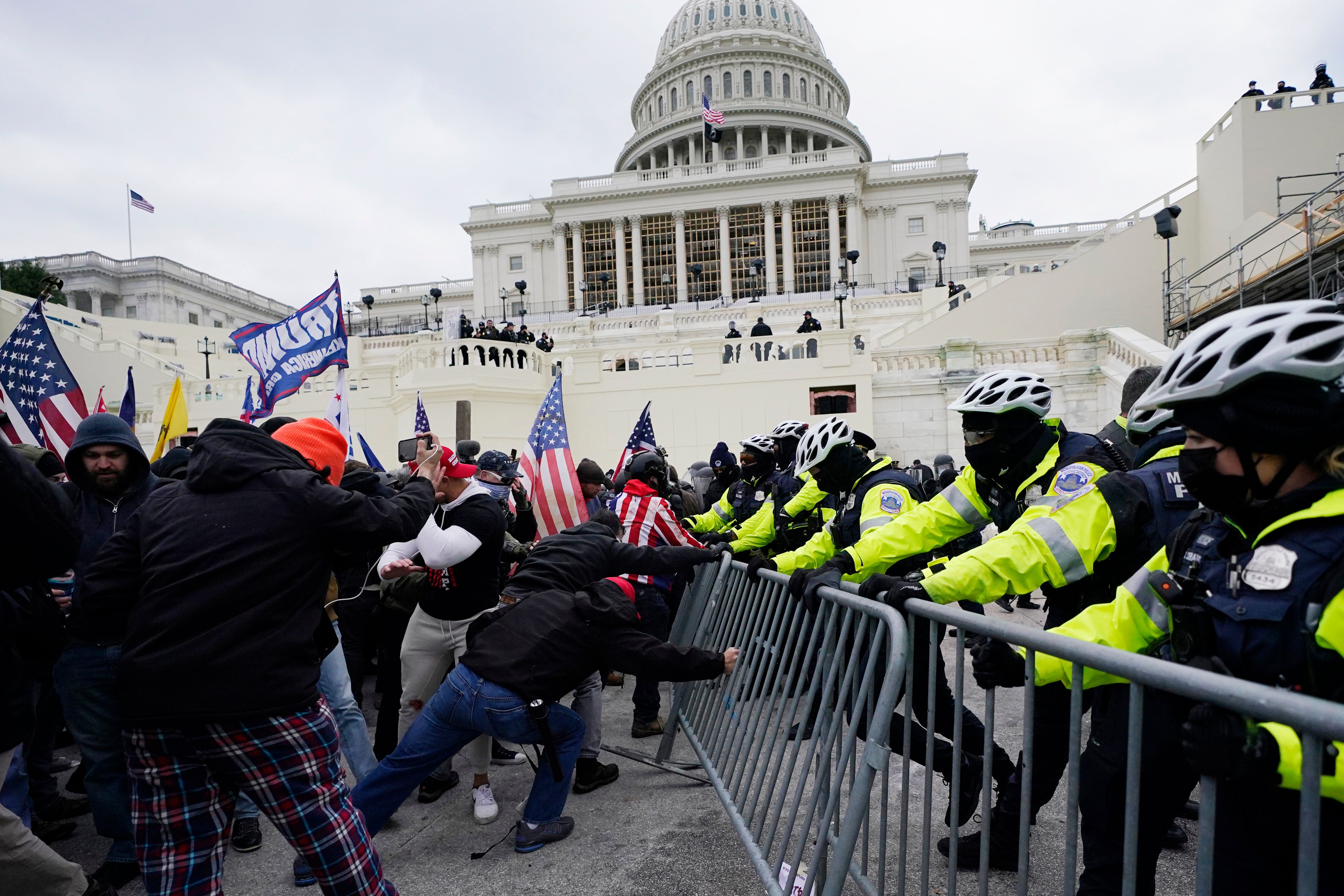I was at the Capitol on January 6. Here’s what the committee hearings missed out
I have reported on political violence and extremism in the Middle East as a foreign correspondent. My experience there taught me that for extremists to survive and operate successfully, they need a base of support among the wider public. The attack on the Capitol felt like a threshold had been crossed


On the morning of January 6, 2021, I found myself walking alongside thousands of Donald Trump’s supporters on their way to the US Capitol. The day was cold and moody, much like the crowd.
At the front of that march was a group of serious-looking men in camouflage and tactical vests, likely members of the anti-government Oath Keepers militia. They carried a radio with a large speaker that continued to play Trump’s speech as they walked so that his angry voice filled the air.
I moved with the mass of people as they broke through police lines — again, led by the men in camouflage clothing. This vanguard of weekend warriors attacked Capitol officers with sticks and poles and thousands followed behind them, eventually filling the steps and balconies all around the grand, domed Capitol.
A few hours later, when the violence had subsided, I distinctly remember watching people take selfies with each other outside the building to commemorate their great adventure. Older couples, mixed groups, and people who came up on buses from Florida celebrated with the violent men who led the attack on the Capitol.
Tonight, a year and a half from that day, the House committee investigating the events of January 6 will hold its last televised hearing of its current run. More are scheduled in September, but what we have seen so far forms the foundation of the case against Trump and his allies.
Watching the hearings over the last month, I’ve been impressed with what the committee has uncovered. Its members have rightly focused on the powerful people and groups who planned and caused the violence on that day. They have taken us behind the scenes at the Oval Office as Trump fumed at staff and revealed a high level of planning by the men in camouflage for what would transpire.
But I have also noticed something missing.
What was most shocking to me that day was not just the violence, but just how many ordinary people went along with it. It was the tacit endorsement of the violence of the few, by the many, that stuck with me.
When I got back from the Capitol to my hotel that evening I wrote about what had happened. An excerpt from what I wrote then reads: “Hours later, when the mob had been cleared, Senators returned to the Capitol to finish what they started and certify the election results. Republicans issued statements condemning the attack on the Capitol building as a grave attack on democracy. But just down the road, people who had moments earlier carried out that attack boarded buses and trains to go home, smiling and laughing. They gathered in groups to retell the adventure as if they were leaving a sports game.”
The day after the Capitol attack I wandered down to the building to see if anyone had gone back to the scene of the crime. I saw one family taking pictures of themselves with the Capitol as the backdrop, many of them decked in Trump merchandise. “We were up there,” said a man called Mike Walls, cheerfully. “Drain the swamp, that’s all we want.”
“Yesterday was awesome. A bunch of friendly, peaceful people… went inside their building,” Walls went on.
Scenes like these left an impression on me. I have reported on political violence and extremism in the Middle East as a foreign correspondent. My experience there taught me that for extremists to survive and operate successfully, they need a base of support among the wider public. The attack on the Capitol felt like a threshold had been crossed.
In the time since the attack, I have interviewed numerous extremism researchers, many of whom I had previously crossed paths with while reporting on Isis in Syria and Iraq, to ask them about this phenomenon of normalising extremism. Seamus Hughes, deputy director of the George Washington University’s Program on Extremism, has been tracking the hundreds of criminal cases against those who stormed the Capitol. Beyond the headlines about militia members he, too, found the same uncomfortable truth.
“The interesting thing about these people is that they are not interesting. You’ve got construction workers and yoga instructors. They come from a cross-section of America,” he told me. “It’s a reflection of where we are in domestic extremism in general.” In other words, extremism in America has gone mainstream.
For all the good the committee has done holding the powerful people and groups behind the Capitol attack to account, I can’t shake the feeling that it has barely scratched the surface in helping us understand how so many people were fooled into thinking their country was being stolen. Was it political polarisation that allowed Trump to create an alternate reality for his supporters and spur them to violence? Or cultural polarsaiation? Or both? Was it an online ecosystem that allowed misinformation to spread like wildfire among a generation who did not grow up with the internet? Was it Donald Trump’s bully pulpit, the power of the presidency, that allowed him to fool so many of his devoted supporters?
And if it is all of the above, how do you stop this kind of political violence from happening again?
These are some of the questions I have about the Capitol attack. The problem lies with figuring out who to ask.
Bookmark popover
Removed from bookmarks